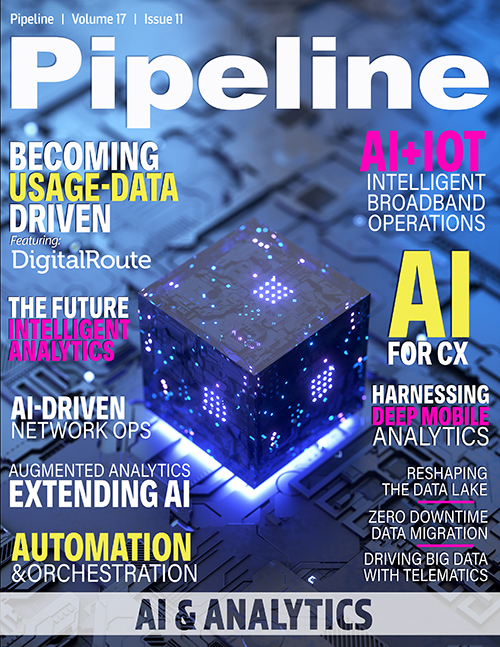AI, ML and the Intelligent Analytics Future
Monetizing 5G services in B2B
The ability to monetize 5G is among the key reasons for implementing artificial intelligence in telecom organizations. How can communication and digital service providers monetize the technology?
Almost 95 percent of surveyed operators in recent research believe NaaS (network-as-a-service) will be the driver of 5G monetization, and therefore offers a big revenue opportunity. Network slicing and following NaaS are named among the most promising ways to utilize artificial intelligence and 5G technology, especially when it comes to forming new B2B partnerships.
Realizing the potential behind these services, communication and digital service providers need to face a few challenges first. The biggest is automation, especially within the domains of end-to-end coordination, RAN, core and transport networks. Solutions driven by artificial intelligence and machine learning can certainly be of great help—if not entirely necessary—in facing these challenges, and in deploying network slicing and network as a service.
Monetizing 5G and IoT services in B2C
When it comes to business-to-consumer transactions, 5G networks implemented on a large scale can be the driver of development of more Internet of Things and 5G services, including in areas such as smart homes, smart cities, smart transport, remote healthcare (which has proven to be critical during the pandemic), and more. The possibilities are limited only by our imagination.Yet these IoT and 5G services will only be available if we implement artificial intelligence, machine learning and AI-powered big data analytics, which enable seamless cooperation between the different tools, devices, and equipment crucial to deploying these services. This real-time communication is the key to developing and maintaining a high level of service.
Customer experience and churn
Artificial intelligence and machine learning technologies also have the potential to transform how digital and communication service providers address customer service and handle churn prediction. Churn prediction is the ability to detect which customers might discontinue a service, based on how they are using it in real time.
Gaining new customers in a highly competitive environment is a challenge but customer retention can be even harder. This is where big data analytics driven by artificial intelligence and machine learning can be exceedingly helpful.
Analyzing data in real-time, collecting all the acquired information, and receiving conclusions with actionable suggestions is pretty much impossible manually—especially for the biggest telecom operators. Artificial intelligence and machine learning can give communication and digital service providers an unprecedented opportunity to analyze huge chunks of big data. More importantly, they can react quickly to customers, even predicting their actions and needs.
This means that, by utilizing artificial intelligence and machine learning, communication and digital service providers can better fulfill customers’ needs by providing them with more tailored offers, which may prevent them from leaving for a competitor.
Preparing for the AI- and ML-powered future
Artificial intelligence, machine learning, and the intelligent big data analytics they power hold great potential. They can be helpful in optimizing an operator’s business, creating new partnerships, and monetizing opportunities that will arrive with new digital services.
In a world of dynamic changes and constant digital transformation, automation remains the biggest issue for communication and digital service providers. While AI- and ML-driven solutions are quite expensive now, the benefits far outweigh the costs.
While not every organization using them is realizing their full potential, companies already in the process of adopting AI- and ML-driven technologies will have a huge advantage, whether in optimization or in monetizing new services.
If you and your service provisioning organization haven’t yet started your journey toward automation, start now. Weighing the advantages and challenges yields a simple conclusion: automation offers the best and only way to thrive and survive in the foreseeable future of telecommunications.


















